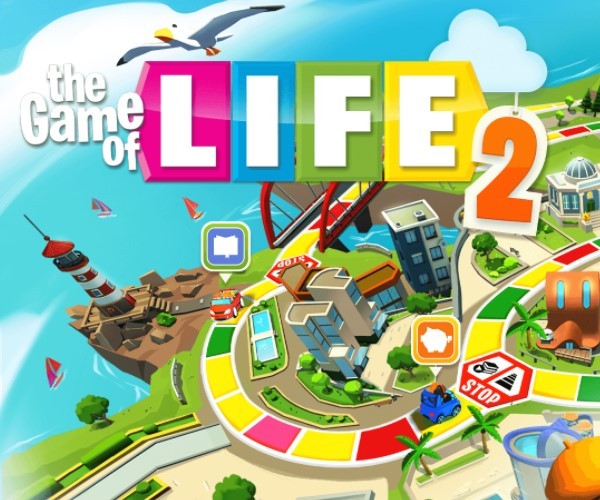

2Institute for Culture and Society, Western Sydney University, Parramatta, NSW, AustraliaĬellular automatons and computer simulation games are widely used as heuristic devices in biology, to explore implications and consequences of specific theories.1Centro de Ciencias de la Complejidad C3, Universidad Nacional Autónoma de México, Mexico City, Mexico.© Arizona Board of Regents Licensed as Creative Commons Attribution-NonCommercial-Share Alike 3.0 Unported (CC BY-NC-SA 3.Lorena Caballero 1 *, Bob Hodge 2 and Sergio Hernandez 1 “Erik Weisstein’s Treasure Trove of the Life Cellular Automaton.” (Accessed November 24, 2009).ĭamerow, Julia, "The Game of Life, by John Horton Conway". Cellular Automata: A Discrete View of the World. “Are We Real?” What We Still Don’t Know (BBC Channel 4 Television Series). Originally published as “Fantastic Combinations of John Conway's New Solitaire Game ‘Life’." Scientific American 223 (1970): 120–23. New York: Mathematical Association of America, 2005. “Game of Life, Part I.” Martin Gardner's Mathematical Games (CD-ROM). Cellular Automaton Modeling of Biological Pattern Formation. Modeling Reality: How Computers Mirror Life. Białynicki-Birula, Iwo, and Iwona Białynicka-Birula.“Science: Flop of the Century?” Time Magazine, January 21, 1974. As Iwo and Iwona Białynicki-Birula state in their book Modeling Reality: How Computers Mirror Life, this cost American companies millions of dollars because many Game of Life enthusiasts spent much of the expensive computing time playing the game. When Gardner published his articles on the Game of Life, however, digital personal computers were not yet available, and the game was played on a checkerboard, on paper-or on large and expensive mainframe computers. One of the reasons the game is so intriguing to the player is that complex patterns can evolve from simple rules and starting positions. Different versions of the game, with modified rules, were introduced to simulate biological processes like pattern formation. The Game of Life became popular especially among computer enthusiasts. This corresponds to adding a counter to or removing a counter from a cell on the checkerboard. Each cell of a cellular automaton has a value, which changes at discrete time-steps. In the Game of Life the lattice is the checkerboard. A cellular automaton consists of components called “cells” that form a one- or multidimensional lattice. Eric Weisstein’s website “Treasure Trove” provides a searchable catalog of over 200 possible patterns ( ).Ĭellular automata, a mathematical model created by These repeating patterns are called “oscillators.” There are many more patterns that can evolve. Another possibility is that a population indefinitely exhibits a fixed number of patterns in a fixed order. Some other initial arrangements lead to stable patterns that don’t change anymore.

There are different patterns a population can develop, depending on the initial arrangement of the counters. When all dead counters are removed from and all new counters are placed on the checkerboard, a new “generation” of the population is created. All births and deaths of counters occur at the same time, meaning that the player removes and adds counters after Conway’s rules are applied to all counters. A counter is added to an empty cell on the checkerboard (it is born) if the cell has exactly three neighbors.

A counter is removed from the checkerboard (it dies) if it has either four or more neighbors or one or no neighbor. A counter is kept on its position on the checkerboard (it survives) if it has two or three neighboring counters. Conway defines three rules for keeping, removing, and adding new counters to the checkerboard. The basic idea of the Game of Life is to observe how the pattern built by the counters changes when the player repeatedly applies Conway’s rules for “birth, death and survival” of the counters.Ī counter can have a maximum of eight neighboring counters: four orthogonal neighbors, and four diagonal ones. The arrangement of the counters is up to the player. The player begins by positioning a set of counters on the checkerboard this is the initial population of the Game of Life. To play the game without a computer, the player needs a large checkerboard and a lot of counters. The Game of Life can be played with or without a computer.
The game of life computer game download#
There exist several websites that provide the Game of Life as a download or as an online game (for example ). Martin Gardner popularized the Game of Life by writing two articles for his column “Mathematical Games” in the journal Scientific American in 19. It is a simple representation of birth, death, development, and evolution in a population of living organisms, such as bacteria. The Game of Life, or just Life, is a one-person game that was created by the English mathematician


 0 kommentar(er)
0 kommentar(er)
